Did you know? Many sports fields are now choosing LED lights due to their significant advantages, including higher energy efficiency, longer lifespan, and greater versatility. By replacing traditional metal halide, HPS, or mercury vapor lamps with LED lighting, substantial savings can be achieved in both operational and maintenance costs over time. Let’s explore the benefits of using LED sports lighting.
Table of Contents
ToggleCost Efficiency
Reducing Running Costs of a Sports Stadium
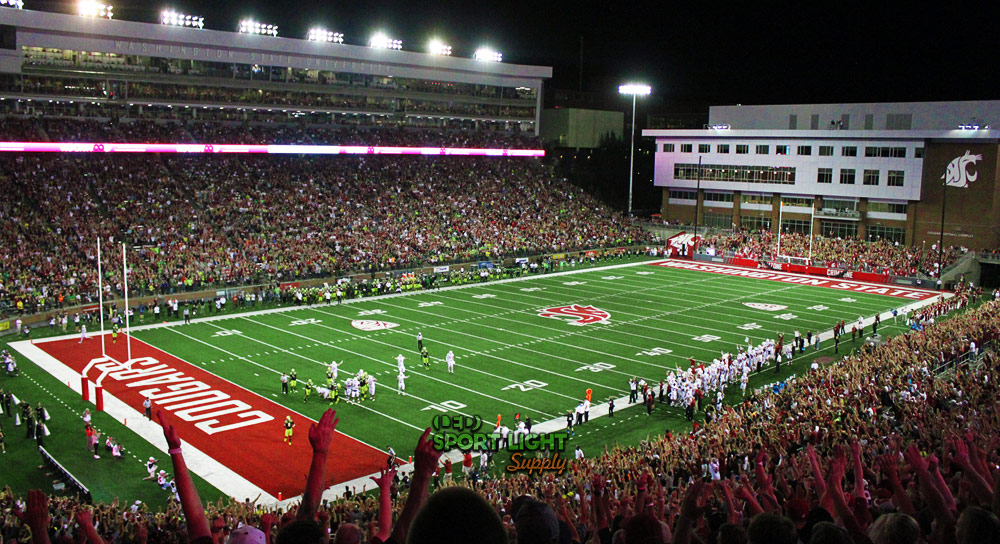
Using LED lights can significantly reduce the running costs of a stadium. Traditional lighting systems, such as metal halide, HPS, or mercury vapor lamps, are notoriously expensive to operate, especially when the lights are needed daily for team practices and events. LED lighting offers a cost-effective solution, enabling sports fields to be illuminated more efficiently, reducing energy consumption by 75-85% compared to traditional lighting. This substantial reduction in energy usage translates to lower operating expenses, making it feasible for teams to train under consistent and controlled lighting conditions.
Training under professional lighting conditions is crucial for athlete performance, and with LED lighting, stadiums and arenas can offer these conditions without incurring exorbitant costs. The reduced running costs also mean that the stadium or arena can lease their fields at more affordable rates, benefiting both the venue and the teams using the facilities.
Reducing Maintenance Costs
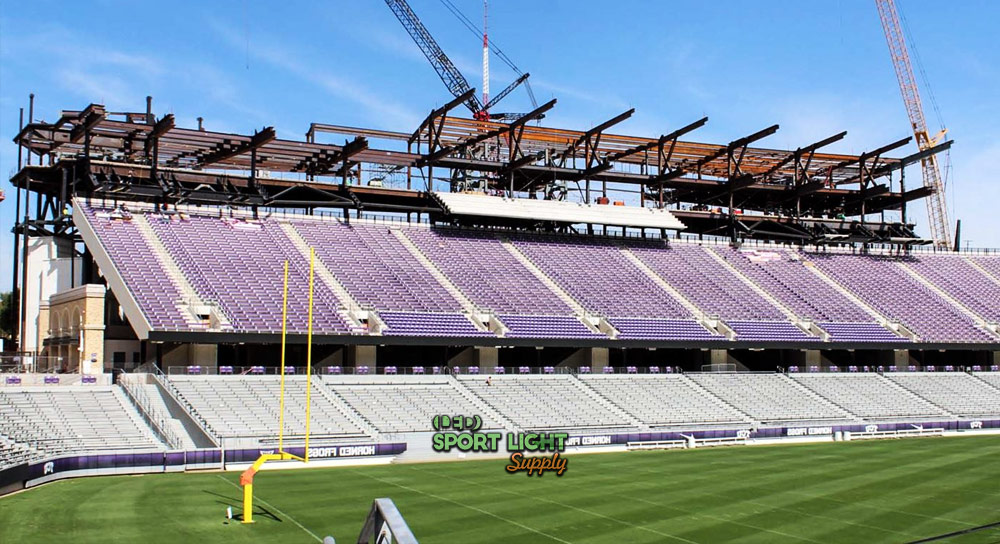
Maintaining traditional sports lighting systems can be a costly and time-consuming endeavor. The filament bulbs used in these systems are prone to burn-out due to the high temperatures they reach during operation, necessitating frequent replacements. This not only increases maintenance costs but also requires regular attention from the maintenance crew to ensure the lights are functioning properly.
LED lights, on the other hand, offer a much more reliable and cost-effective solution. With a longer lifespan and lower maintenance requirements, LED sports lights drastically reduce the need for frequent replacements and maintenance checks. This allows stadiums and sports fields to operate more efficiently, with fewer interruptions and lower ongoing costs. The financial benefits of lower maintenance costs, combined with the reduced energy expenses, make LED lighting an attractive option for sports facilities of all sizes.
Dimmable Stadium Lighting for Training
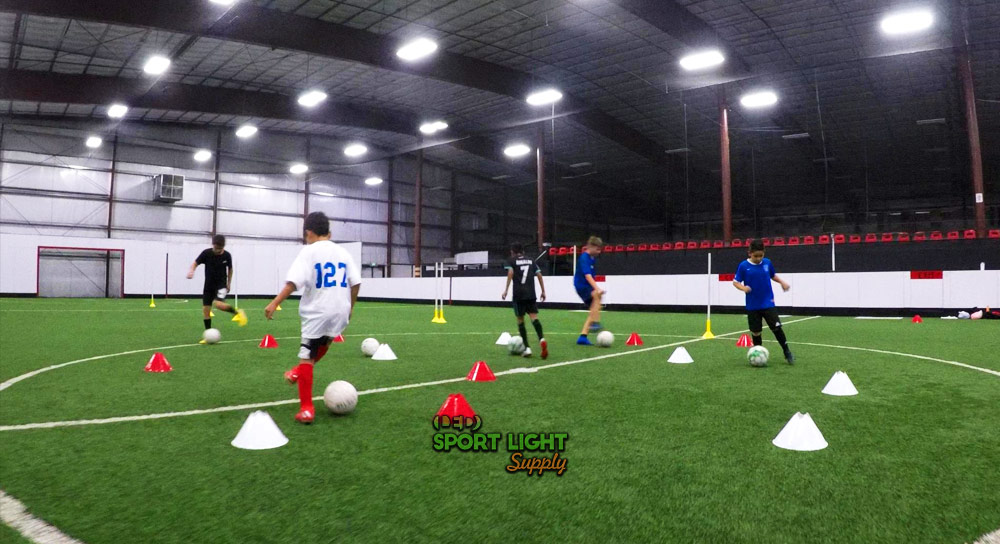
Not all training sessions require full illumination. While it’s essential to have 100% lighting during major games, practice sessions often benefit from lower light levels. Dimming the lights during training not only conserves energy but also provides a safer environment for athletes. Reduced lighting levels help in preventing injuries and create a more relaxed atmosphere where aggressive playing is less likely to occur.
LED lights excel in this aspect as they can be dimmed without affecting the quality of the light. Unlike traditional stadium lights, which may suffer damage or reduced lifespan when dimmed, LEDs maintain their performance regardless of the brightness level. This flexibility allows teams to adjust lighting according to their needs, ensuring a cost-effective and safe training environment.
Performance and Quality of Light
Flicker-Free Lighting for Broadcast Quality
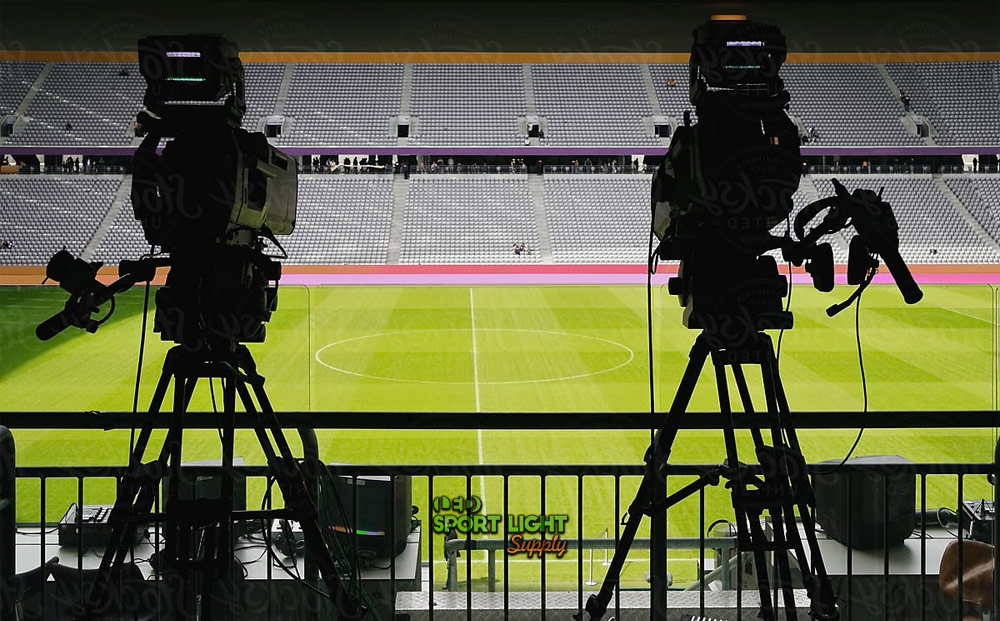
One of the key advantages of LED sports lighting is its ability to provide flicker-free illumination. Traditional lighting systems often produce a noticeable flicker, especially when viewed through high-definition cameras or during slow-motion playback. This flicker can be distracting for viewers and detract from the quality of broadcasts.
LED lights, however, operate at a frequency that is imperceptible to the human eye and modern camera equipment. This ensures that the lighting appears steady and consistent, even during high-speed video recording or playback. As a result, sports broadcasts benefit from clear, high-quality images without the interference of flickering lights. This flicker-free performance is essential for television broadcasts, especially in the era of HDTV and 4K/8K resolution, where every detail matters.
High CRI for Vivid Color
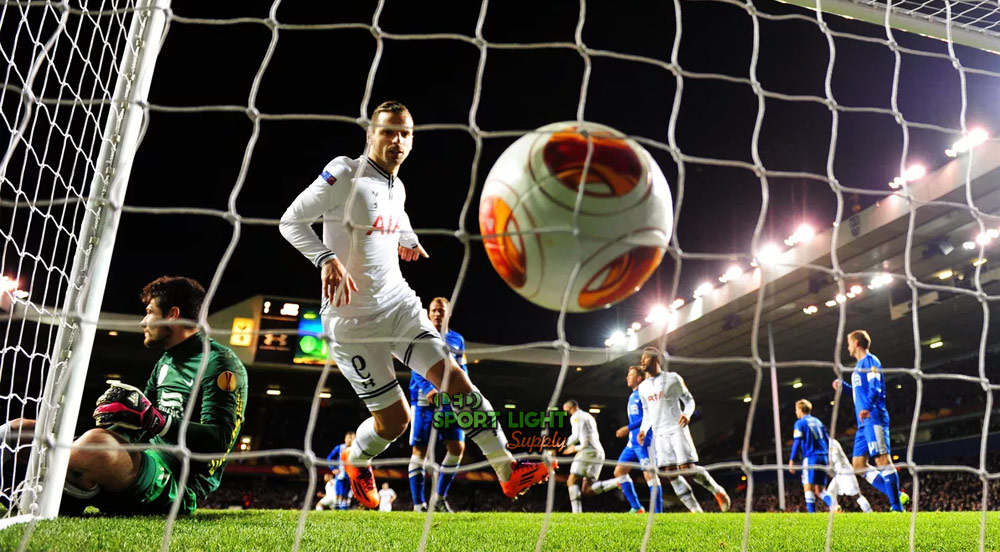
The need for clear vision on the playing field is crucial, especially when tracking fast-moving objects. LED sports lighting excels in this area by providing a high Color Rendering Index (CRI), which enhances the vividness and accuracy of colors. High CRI lighting ensures that players can clearly see objects and materials around them, which is particularly important for sports where quick reactions are essential.
The CRI of LED lighting balances light and dark areas, helping to sharpen the field of vision and improve contrast without overwhelming the senses. This is especially important in sports where the color of the grass, uniforms, or the ball must be distinct and easily visible, even at high speeds. The combination of appropriate light levels, temperature, and CRI allows for a more dynamic and visually engaging playing environment, ensuring that every detail is clearly illuminated.
Eliminating Shadows and Blind Spots on the Field
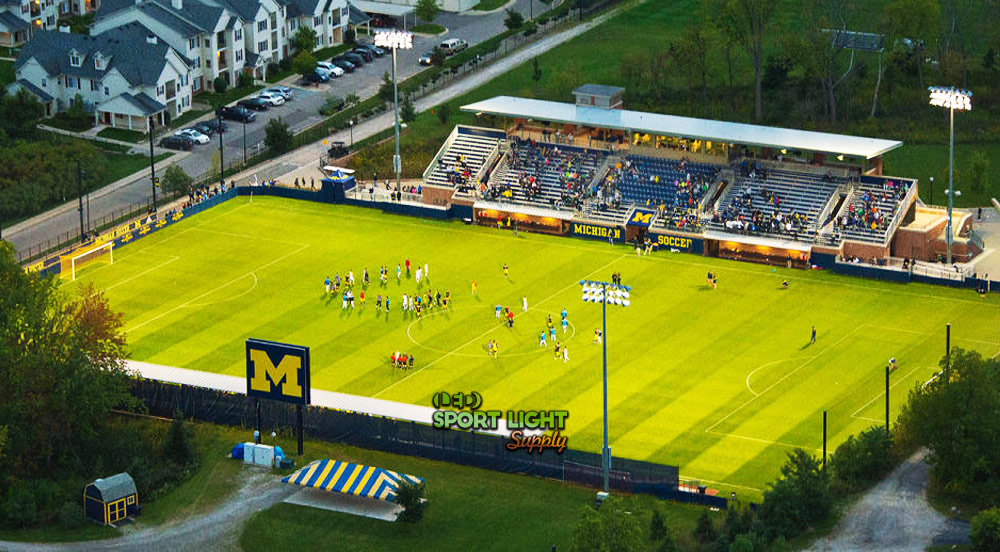
Playing in natural sunlight can create challenging shadows and blind spots on the field, which can hinder a player’s ability to see clearly. These shadows can act as handicaps, affecting a player’s performance and creating unfair advantages or disadvantages during a game. LED lighting systems, especially when used in retrofitted sports fields, help eliminate these issues by providing uniform lighting that removes unnecessary shadows and blind spots.
LED lights are often strategically placed around the field, rather than just in the corners, to ensure that the entire playing area is evenly illuminated. This setup allows players to maintain a clear line of sight from any angle, reducing the chances of errors due to poor lighting conditions. The enhanced visibility provided by LED lights is particularly valuable in professional sports, where precision and accuracy are paramount.
Improved Light Direction and Control
Traditional sports ground lights, which use filament bulbs, emit light in all directions, necessitating the use of reflectors to redirect the light onto the field. However, even the best reflectors scatter the light to some extent, leading to inefficiencies and light pollution. LED lights, on the other hand, emit light at a more focused 180-degree angle, which can be further refined using lenses to direct the light precisely where it is needed.
This precise control over light direction not only improves the illumination of the field but also reduces light pollution, making LED lights an environmentally friendly choice for sports facilities. The ability to focus light with precision enhances both the gameplay and the viewing experience for spectators, ensuring that every corner of the field is well-lit and visible. The result is a more effective lighting system that enhances performance and enjoyment for all involved.
Enhanced Lighting Uniformity Across the Field
One of the key advantages of LED sports lighting is its ability to provide enhanced lighting uniformity across the entire playing field. Traditional lighting systems often struggle to distribute light evenly, leading to areas of the field that are either too bright or too dim. This inconsistency can affect both player performance and the viewing experience for spectators.
LED lights, on the other hand, are designed to offer consistent illumination, ensuring that every part of the field is equally well-lit. This uniformity is crucial for sports where precision and visibility are paramount, such as baseball, soccer, and tennis. Players can perform with confidence, knowing that the entire field is clearly visible, while spectators enjoy an uninterrupted view of the action.
Player and Fan Experience
Enhancing Player Performance with LED Lighting
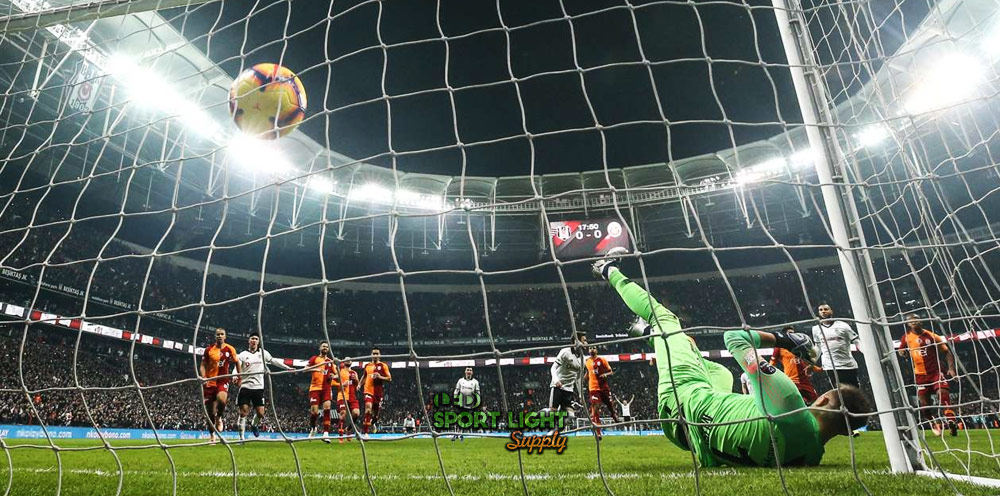
LED sports lighting also serves as an excellent training tool, providing high-quality illumination that allows athletes and coaches to analyze performance with precision. Slow-motion video analysis is a critical component of modern sports training, enabling players to identify areas for improvement by reviewing their movements and strategies on the field.
The superior quality of LED lighting ensures that these videos are clear and detailed, making it easier to spot mistakes and make the necessary adjustments. This level of analysis is invaluable for refining performance during official games, as well as for post-match reviews where every play is scrutinized. With LED lighting, athletes have the advantage of training and performing under conditions that closely replicate the actual game environment, leading to better preparation and improved outcomes.
Enhancing Player Performance with Red Light Therapy
Red light therapy is becoming an increasingly popular tool for athletes to improve their performance and recovery. Off the field, players can use this specific light spectrum to aid in muscle recovery and endurance building. Red light therapy helps in repairing sore muscles, reducing the likelihood of fatigue-related injuries that can sideline key players.
In team sports, the absence of a player due to muscle fatigue can significantly impact the outcome of a game. Integrating red light therapy into training routines, both before and after practice, supports sustained muscle recovery. This therapy accelerates the body’s natural healing processes, allowing athletes to stay in peak condition and perform at their best during games.
Improved Fan Experience with Dynamic Lighting Effects
LED sports lighting systems offer the ability to create dynamic lighting effects that can greatly enhance the fan experience. Unlike traditional lighting, which is static and unchanging, LEDs can be programmed to change colors, dim, or brighten in response to the action on the field. This capability allows for exciting light shows during halftime, celebrations, or player introductions, adding a new level of excitement to live events.
These dynamic effects can be synchronized with music, crowd noise, or other elements of the game, creating a more immersive experience for fans. This not only makes the event more entertaining but also helps to build a stronger connection between the fans and the team, enhancing overall engagement.
Durability and Reliability
Impact Resistance
One of the biggest challenges with traditional sports lighting is their vulnerability to impacts. A direct hit from a ball can easily shatter the filament in conventional lights, rendering them useless. However, LED lights are designed to withstand such impacts, thanks to their robust construction and the use of protective polycarbonate lenses.
Whether it’s a tennis ball, cricket ball, soccer ball, or football, LED lights can endure the impact without breaking or flickering. This durability makes them ideal for sports facilities where the risk of accidental strikes is high, ensuring that the lighting remains consistent and reliable throughout the game.
Lower Heat Generation Compared to Halogen or Metal Halide Lamps
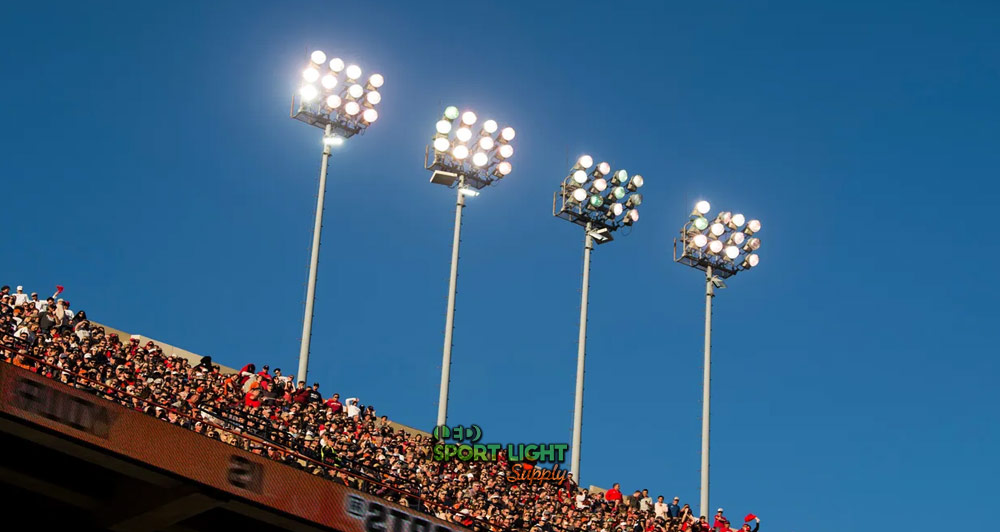
Standard sports lamps, such as halogen and metal halide, generate a significant amount of heat, which can be uncomfortable for both athletes and spectators. The heat produced by these lamps can be felt even from a distance, leading to faster fatigue and potential overheating during play. In contrast, LED sports lights produce significantly less heat, allowing athletes to perform at their best without the added strain of excessive heat.
For spectators, this reduced heat generation enhances comfort, especially in situations where crowd lighting is used. Maintaining a comfortable environment is important, as excessive heat can lead to discomfort and even aggressive behavior among the crowd. LED lighting provides a cooler and more pleasant atmosphere, ensuring that the excitement of the game is maintained without compromising comfort.
Reliable Performance in Hot and Cold Weather
LED sports field lights are designed to operate efficiently in both hot and cold weather conditions. Unlike traditional lights that rely on filaments, which can be slow to warm up in cold weather, LEDs are not affected by temperature extremes. Whether it’s freezing temperatures with snow and ice or scorching heat, LED lights will perform consistently without delays or overheating.
LED floodlights are equipped with cooling systems that dissipate any heat generated by the semiconductors, ensuring that the lights do not contribute to the overall temperature on the field. This feature is especially beneficial in hot climates where additional heat from lighting could impact player performance.
Weather-Resistant Lighting Solutions
Outdoor sports often take place in varying weather conditions, and LED sports lighting is built to withstand these challenges. With high IP ratings, these lights are designed to operate reliably in rain, fog, and other adverse weather conditions. Whether it’s a light drizzle or a heavy downpour, LED lights continue to provide clear and consistent illumination.
Sports like soccer and football, which are frequently played in rainy conditions, benefit from the dependable performance of LED lighting. Even when the skies are overcast, LEDs ensure that the field remains brightly lit, allowing games to continue without interruption.
Operational Efficiency
Immediate Illumination for Gameplay
One of the significant advantages of LED sports lighting is its ability to provide instant illumination. Unlike traditional stadium lights, such as halogen or metal halide, which can take up to 15 minutes to reach full brightness, LEDs light up immediately. This eliminates the need to plan ahead for when the lights need to be turned on, allowing for spontaneous gameplay or quick adjustments during events.
Additionally, the ability to instantly control the brightness levels of LED lights means that they can be used to create dramatic lighting effects, enhancing the atmosphere of the game. Whether it’s for a sudden match or a planned event, LED lighting ensures that the field is always ready for action.
Minimizing Light Bleed and Glare
Reducing light bleed and glare has always been a challenge with traditional stadium lighting systems like HPS or metal halide fixtures. These lights often require large reflectors and additional shields to control the spread of light, but even then, they can produce a significant amount of glare and light pollution. LED lights, however, are inherently more directional and focused, which reduces the need for cumbersome reflectors and shields.
With LED lighting, the light is concentrated where it is needed most, minimizing unwanted glare and light bleed. This allows players to focus on the game without being distracted or blinded by excessive light. Spectators also benefit from this focused lighting, as it provides a clearer view of the action without the discomfort of harsh, glaring lights. The result is a more pleasant and visually balanced environment for everyone in the stadium.
Conclusion
LED sports lighting offers a wide range of advantages that significantly enhance both the functionality and experience of sports facilities. From reducing operational costs and maintenance to improving lighting quality and player performance, LED technology is a versatile and reliable solution. Its durability and energy efficiency make it ideal for modern sports stadiums, providing an optimal environment for athletes and an engaging experience for fans, all while being environmentally responsible. As sports lighting continues to evolve, LED systems stand out as the premier choice for achieving excellence in sports illumination.
